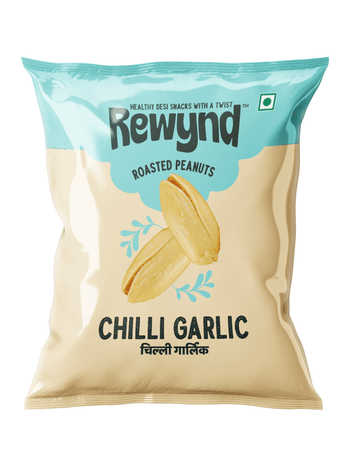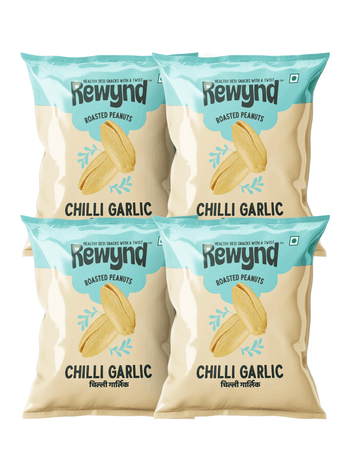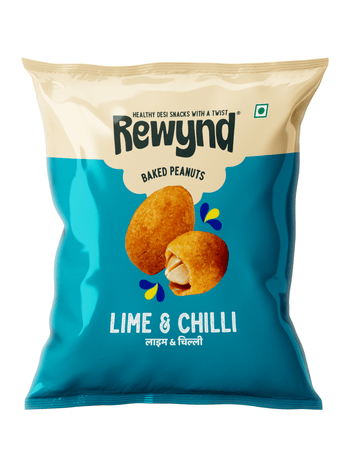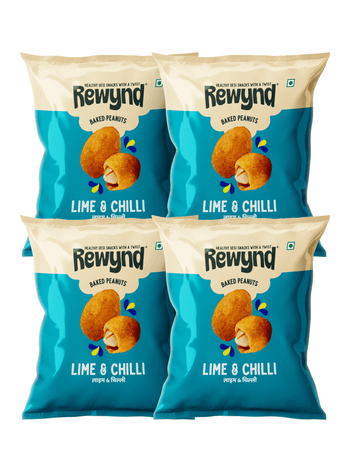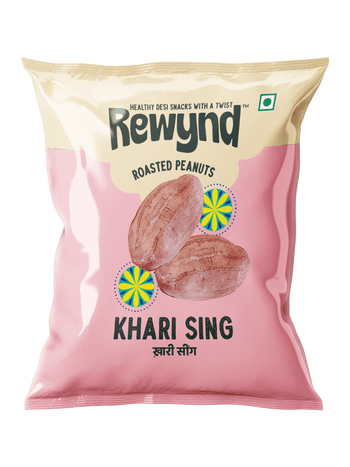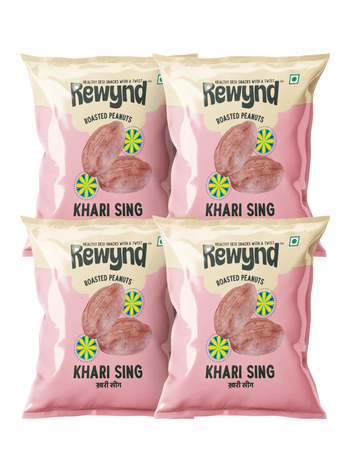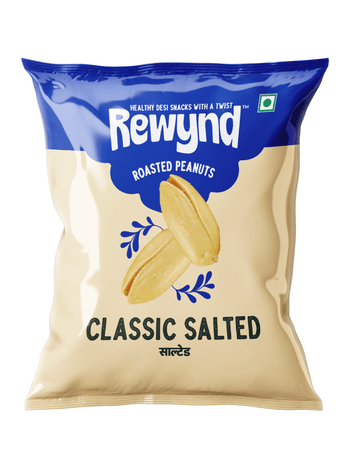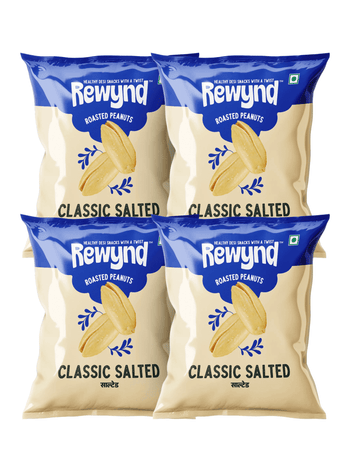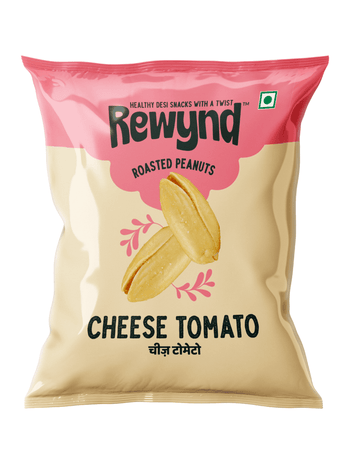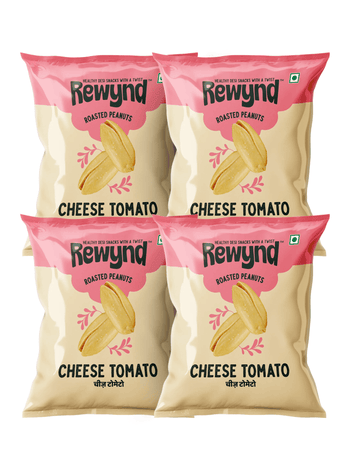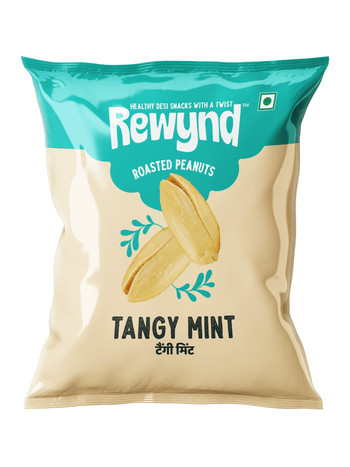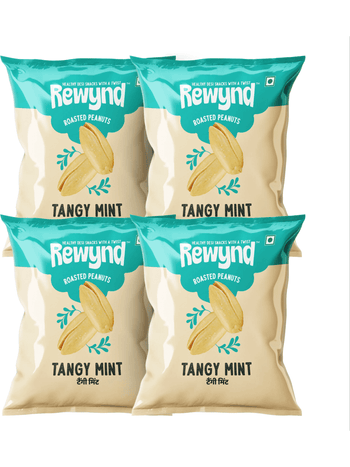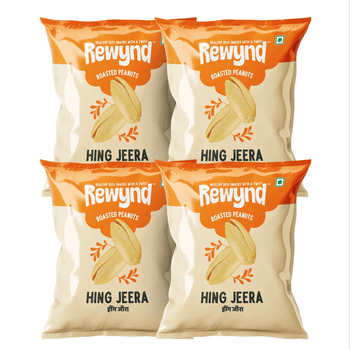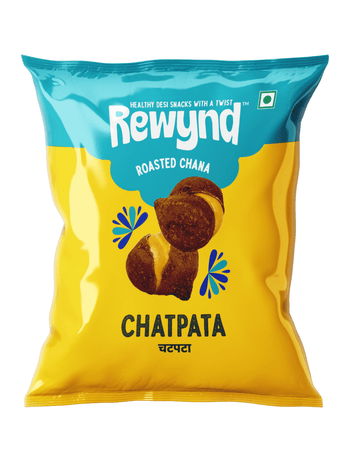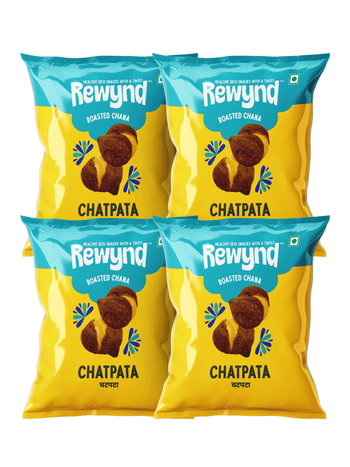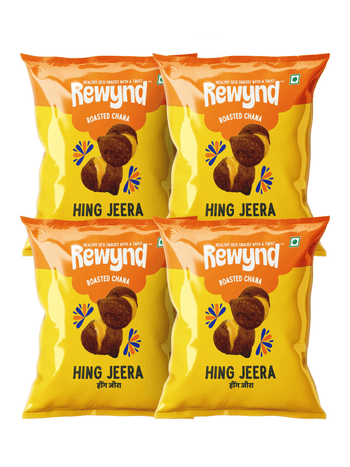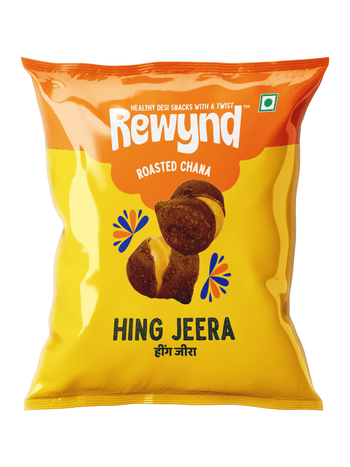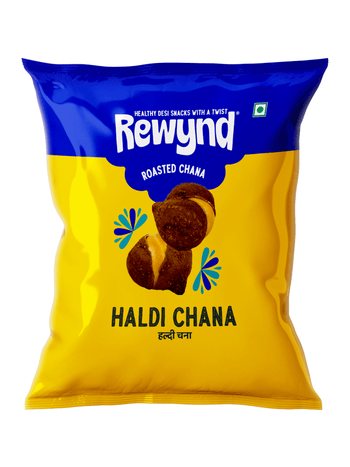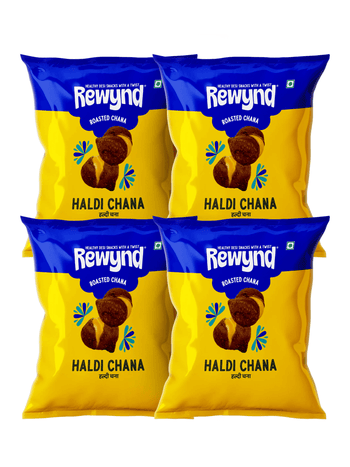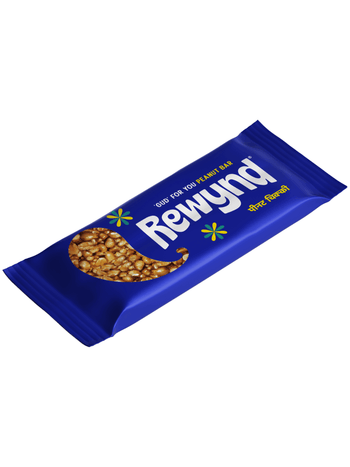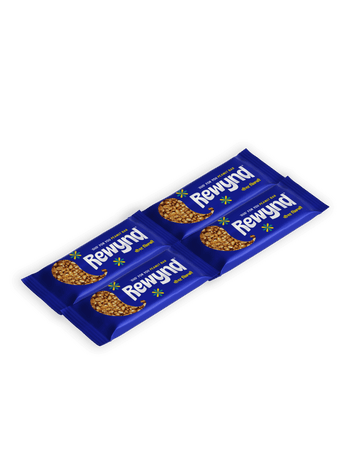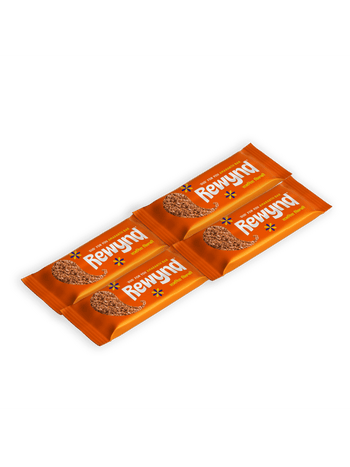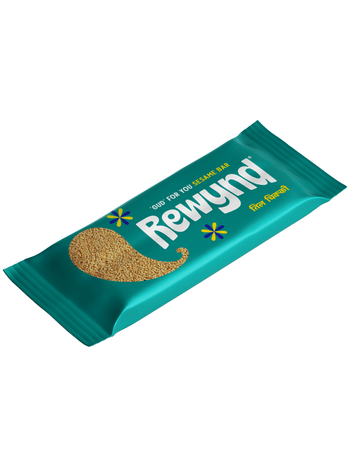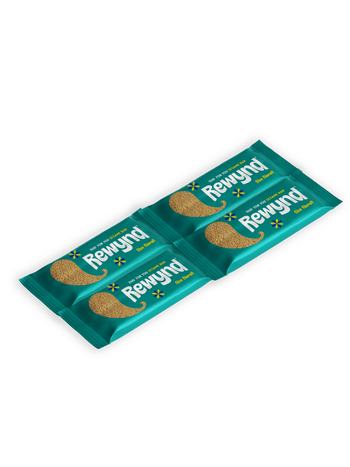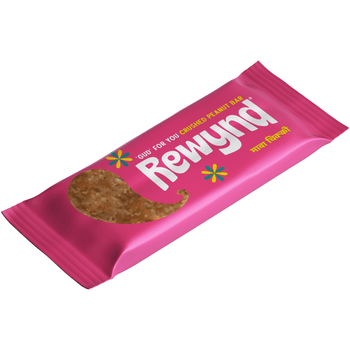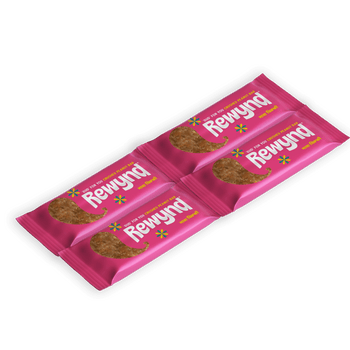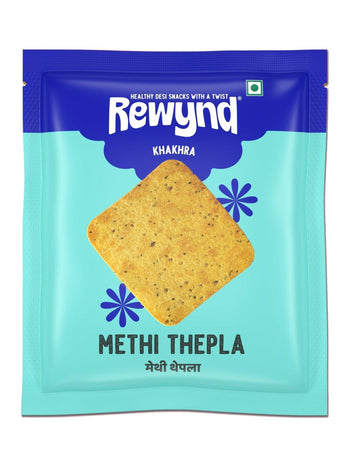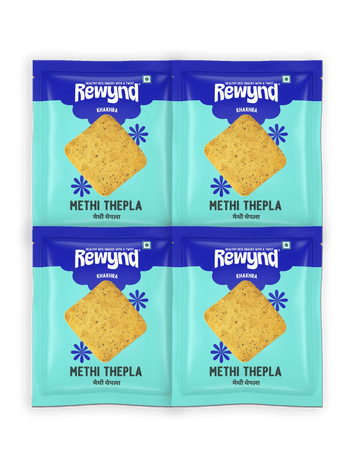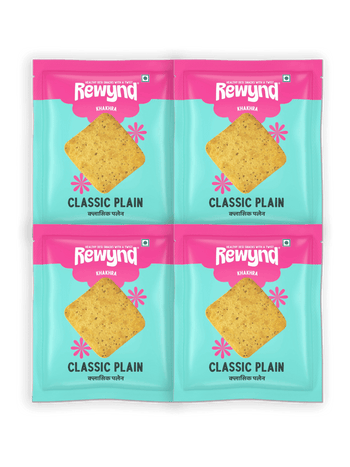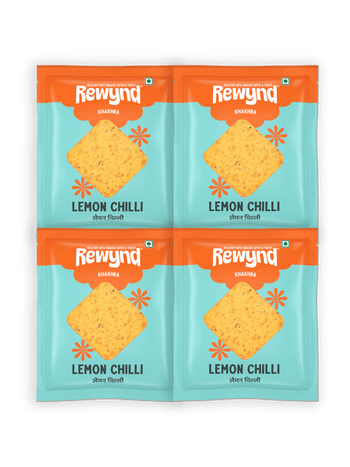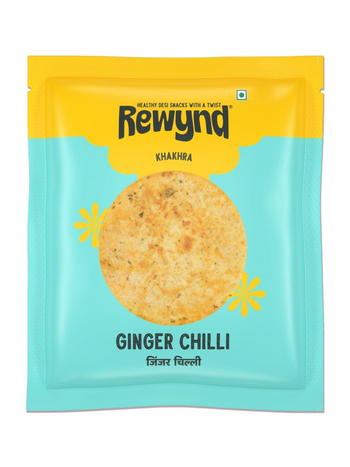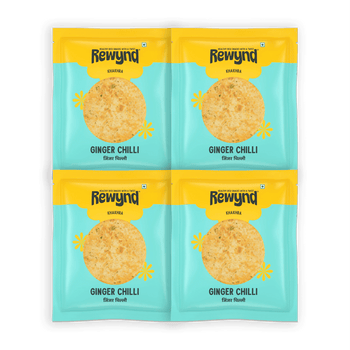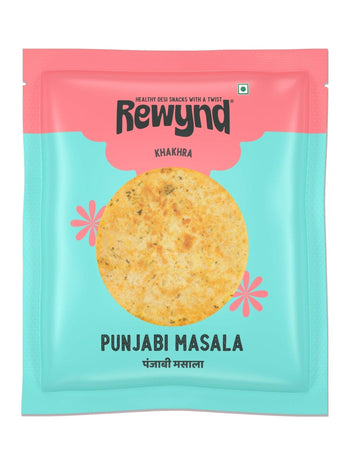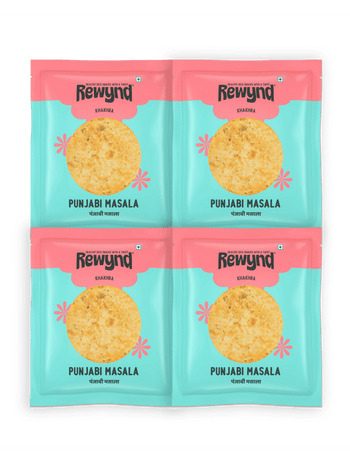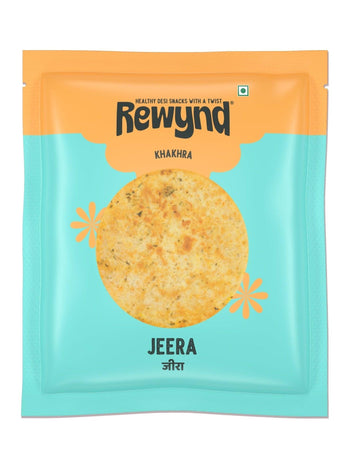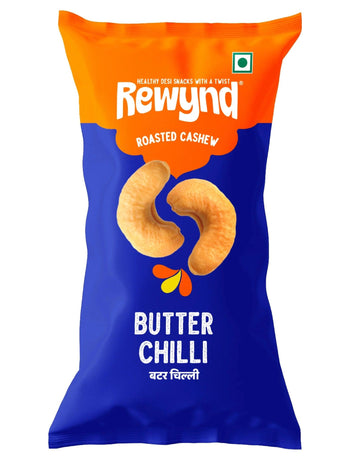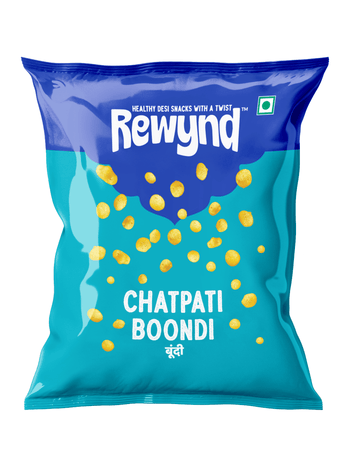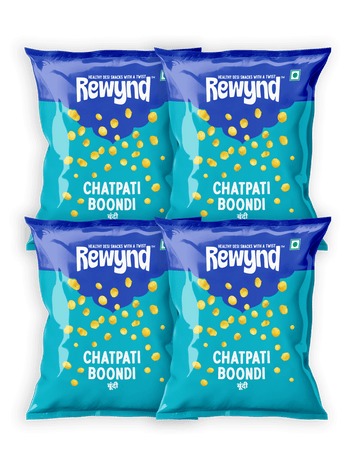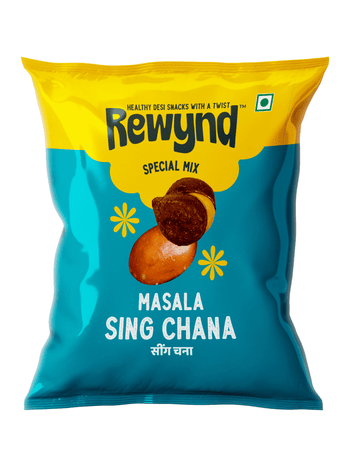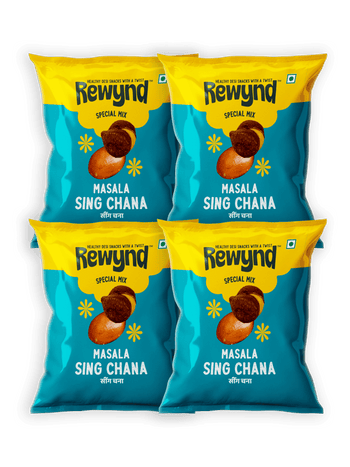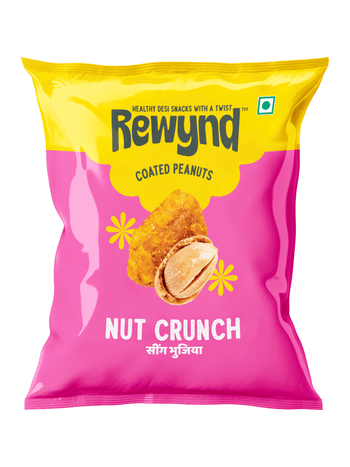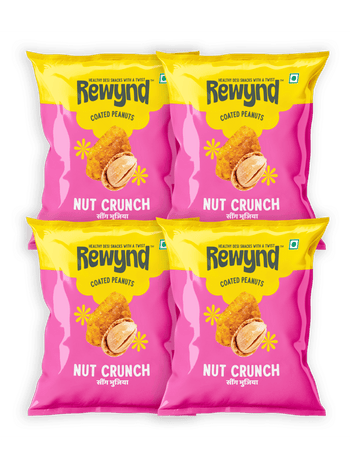Let’s Rewynd a bit.
If you’re trying to eat more protein without meat or eggs, you don’t need fancy powders or complicated recipes. India already snacks on some of the best vegetarian proteins—roasted chana, peanuts, curd/Greek yogurt, paneer, soy/edamame, and seeds. With a few smart swaps, you can turn everyday nibbles into filling, healthy mini-meals. And yes—India’s protein gap is real, so these choices matter.
Why protein at snack time?
Protein keeps you full, supports muscle recovery, and steadies energy. Think of each snack as a chance to “top up” protein rather than saving it for dinner. A simple approach: pair protein + fiber (e.g., chana + kachumber, curd + fruit + nuts) to stay satisfied longer.
The Desi Shortlist (and how to eat them)
1) Roasted Chana (Chickpeas)
Crispy, clean, and naturally rich in protein ~18–19 g per 100 g (≈5–6 g in a small handful). Squeeze lemon, add chopped onions, tomatoes, coriander, and a pinch of chaat masala for a quick chana chaat. For “open the pack and eat” convenience, try Rewynd Chatpata Roasted Chana (zesty, tea-time friendly).
2) Peanuts (Roasted / Peanut Chaat / Peanut Chikki)
Peanuts are among the most protein-dense vegetarian snacks ~25–27 g per 100 g. Toss with chopped onion-tomato, coriander, lemon, and chilli for a 2-minute peanut chaat; or keep it sweet-n-crunchy with peanut chikki (great post-meal treat in moderation).
3) Curd / Greek Yogurt Bowls
A bowl of curd or Greek yogurt gives ~9–10 g protein per 100 g. Make it a mini-meal: swirl in chopped fruit, a few almonds, and a drizzle of honey. On hot days, a salted hung-curd raita with cucumber is cooling and protein-rich.
4) Paneer, Quickly
Paneer delivers ~18 g protein per 100 g. Pan-sear cubes with chilli, jeera, and a dab of ghee, or skewer for paneer tikka. Roll leftovers in a moong-dal chilla or whole-wheat roti for a sturdy evening bite. (Hello, lunchbox upgrade.)
5) Edamame / Soy
Steamed edamame (young soybeans) offers ~12 g protein per 100 g and is a complete plant protein. Sprinkle salt or chaat masala; or stir-fry shelled edamame with garlic and chilli flakes for a five-minute snack.
6) Sprouts Chaat
Sprouted moong/chana are light, fresh, and protein-forward. Toss with kachumber, lemon, and chaat masala. If raw sprouts don’t suit you, lightly steam or sauté with mustard seeds and curry leaves.
7) Trail Mix (Nuts + Seeds)
Mix almonds/peanuts with pumpkin/sunflower seeds and a few raisins (unsweetened). Portion a small fistful into pouches for travel or office.
8) Hummus + Veg / Khakhra
A chickpea-tahini dip (hummus) plus carrot sticks, cucumber, or khakhra gives protein + fiber + crunch. Make a batch on Sunday; snack all week.
Myths, cleared up
“Vegetarians can’t hit protein.”
You can easily with legumes (chana/soy), dairy (curd/paneer), and nuts. India’s challenge is awareness and habit, not availability.
“Greek yogurt is just fancy curd.”
Both are fermented dairy; Greek yogurt is strained, so it’s thicker and typically higher in protein per 100 g. Use either just build a bowl (fruit + nuts) to round it out.
“Edamame is exotic, not for us.”
It’s simply young soybeans steam and season. Nutrition is solid and very compatible with Indian flavors (think chaat masala + lemon).
FAQs
Which veg snack packs the most protein for the size?
Peanuts and soy/edamame top the list; roasted chana is close behind and very budget-friendly.
Is peanut chikki actually a good choice?
As a small sweet, yes it brings peanut protein plus jaggery. Keep portions sensible and pair with a protein-rich day overall. (Try Rewynd’s Peanut Chikki.)
How do I build a “better” snack fast?
Use a protein base (chana, peanuts, curd, paneer, edamame) and add fiber/volume (fruit or veggies). That combo keeps you full and reduces random grazing.



